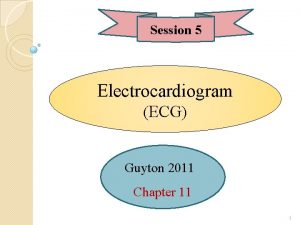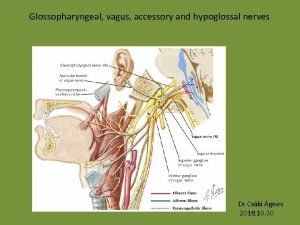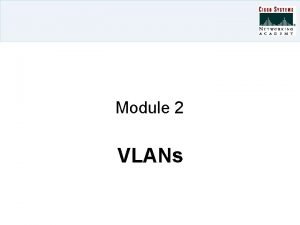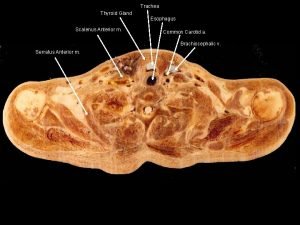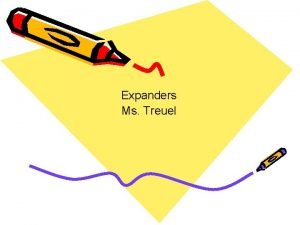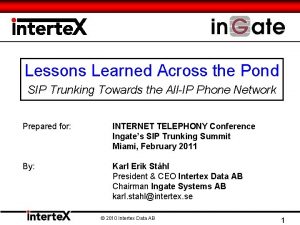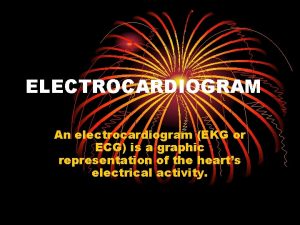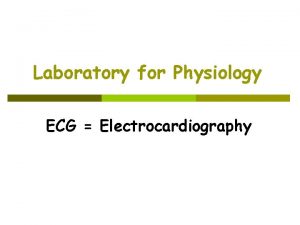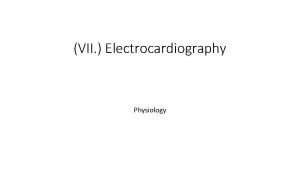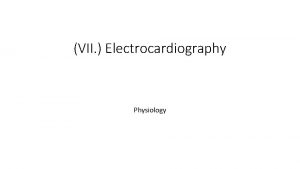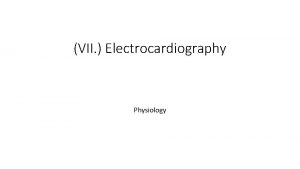Electrocardiography Prof K Sivapalan Principle of Electrocardiogram Trunk













- Slides: 13

Electrocardiography Prof. K. Sivapalan

Principle of Electrocardiogram. • Trunk as volume conductor. • Positively charged and negatively charged areas create electrical field. • The field changes during spread of impulse. • Depolarization towards – upward deflection & away – downward deflection. 2013 ECG 2

Einthovens triangle. • When the source of the electrical field is at the centre of an equilateral triangle, the sum of electrical potential at the three angles is zero. • Since the heart is roughly at the centre of the triangle and the source moves, 5000 ohm resistance is added to the three leads to get zero potential. 2013 ECG 3

Electrocardiograph. 2013 ECG 4

Electrocardiograph. 2013 ECG 5

Electrocardiograph. 2013 ECG 6

Electrocardiograph. 2013 ECG 7

Electrocardiogram. • Electrocardiogram is the record of the changes in the electrical field in the body produced by the electrical activity of the heart. • It represents the sequence and strength of the electrical events in the heart. 2013 ECG 8

Recording ECG. Lead I a. VR Lead II 2013 a. VL Lead III Coronal plane: • Limb leads [Bipolar leads]. • Augmented limb leads. [unipolar] Transverse plane: • Chest [Unipolar] leads V 1 to V 6 across the chest. a. VF ECG 9

Typical Electrocardiogram. • • • 2013 Paper speed- 25 mm/sec. Vertically, 1 m. V = 10 mm. P wave – first wave. Q wave – first down. R wave – first up in QRS. S wave – down after R. T wave – after QRS. U wave – after T. PR interval – 0. 18 sec. QRS duration – 0. 08 sec. ECG 10

Information from ECG. • Rate. • Rhythm • Pattern of spread of impulse and integrity of conducting system. • Size [thickness] of myocardium. • Electrolyte imbalance. • Damage to myocardium. 2013 ECG 11

Examples of abnormal ECG. SA node block 2013 ECG 12

Examples of abnormal ECG. Normal. K+ – 4 – 5. 5 meq / L K+ – 7 meq / L. K+ – 8. 5 meq / L K+ – 3. 5 meq /L. K+ – 2. 5 meq / L. 2013 ECG 13
